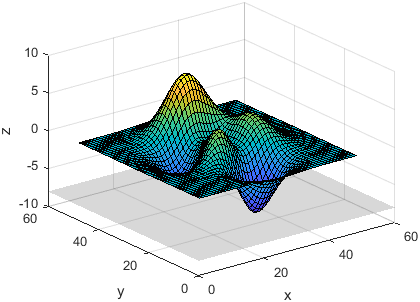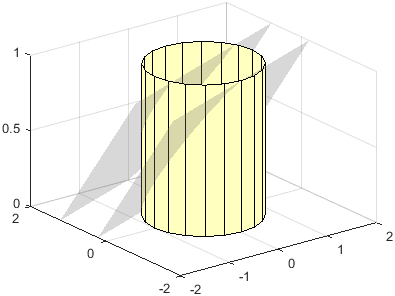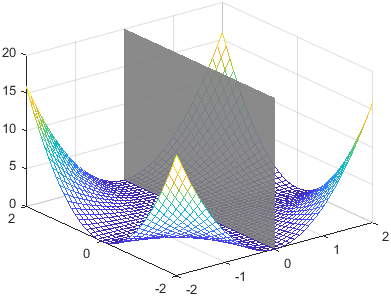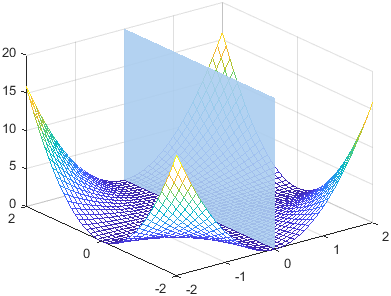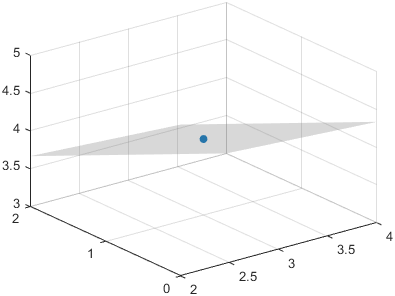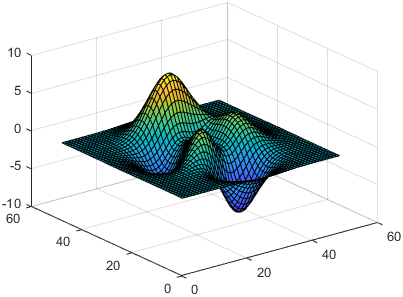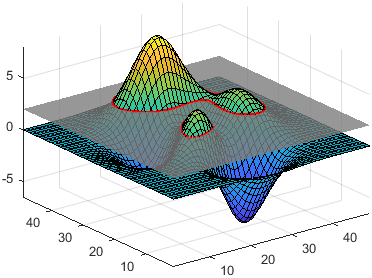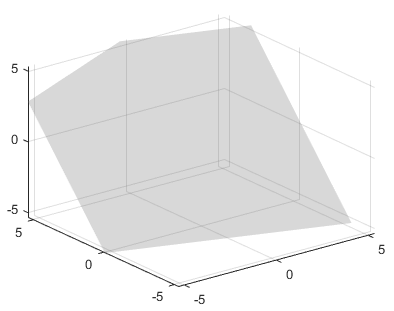constantplane
Syntax
Description
constantplane(
creates an infinite plane for highlighting slices or regions of 3-D plots. The plane
satisfies the equation ax + by + cz
= d, where the normal vector is [a b c] and the offset
value is d. To create a plane that is perpendicular to the
x-, y-, or z-axis, specify
normal,offset)normal as "x", "y", or
"z". To create a skewed plane, specify normal as a
three-element vector.
To create one plane, specify one normal vector (either
"x","y", or"z", or a three-element vector) and a scalar offset value.To create n planes, specify the normal vectors as the rows of an n-by-3 matrix or the columns of a 3-by-n matrix. Specify the offsets in an n-element vector.
constantplane(
specifies properties of the plane using one or more name-value arguments. For example,
normal,offset,Name=Value)constantplane([1 1 1],1,FaceColor="red") creates a red plane. If you
create multiple planes, the property values apply to all of the planes. For a list of
properties, see ConstantPlane Properties.
constantplane( specifies
the target axes for the plane. Specify ax,___)ax as the first argument in any of
the previous syntaxes.
cp = constantplane(___) returns one or more
ConstantPlane objects. Use cp to set properties of
the planes after creating them. For a list of properties, see ConstantPlane Properties.
Examples
Input Arguments
Name-Value Arguments
Version History
Introduced in R2024b
